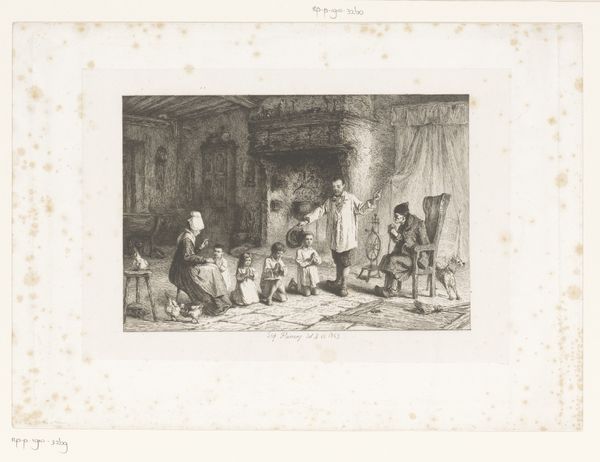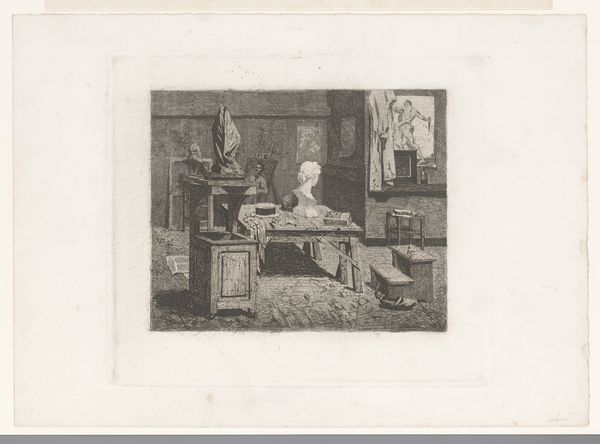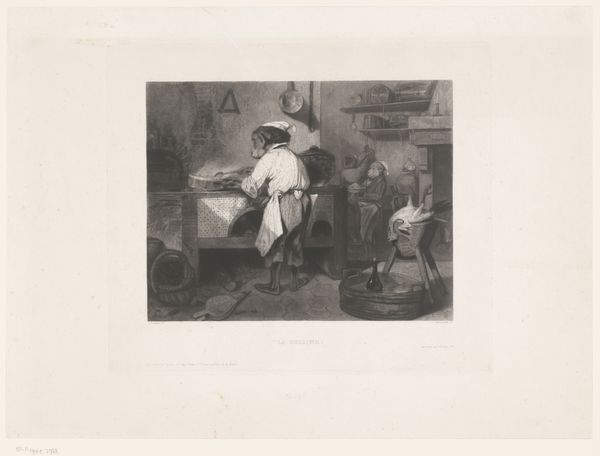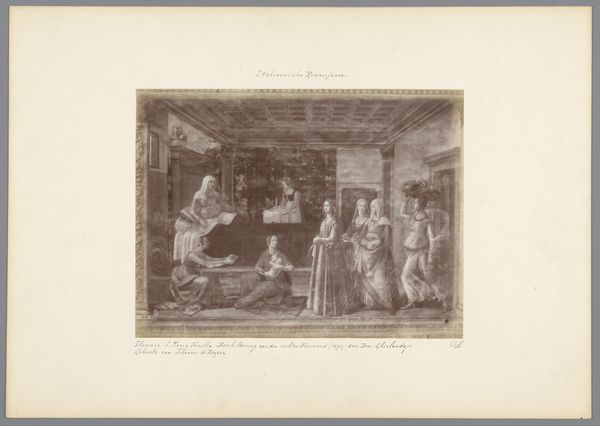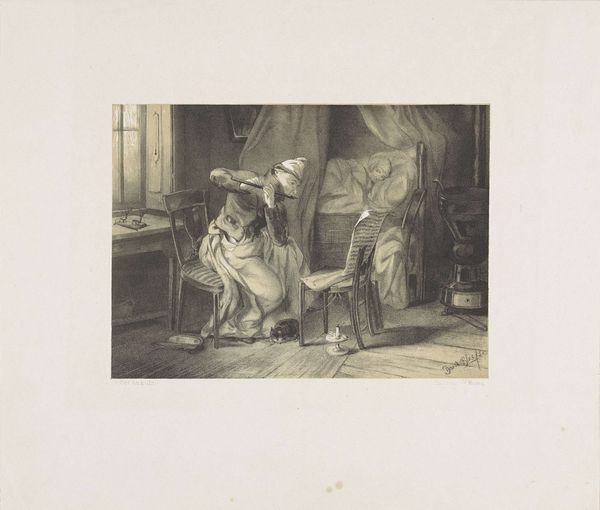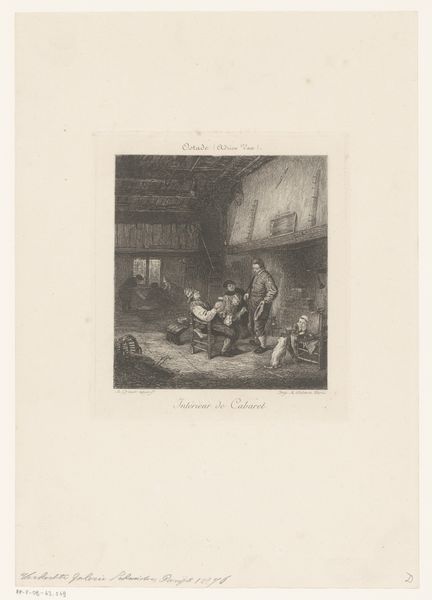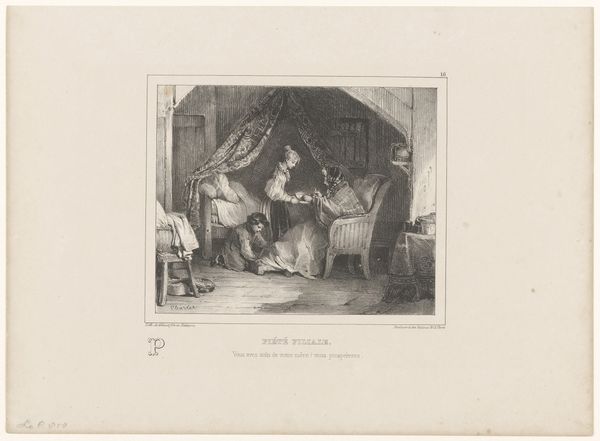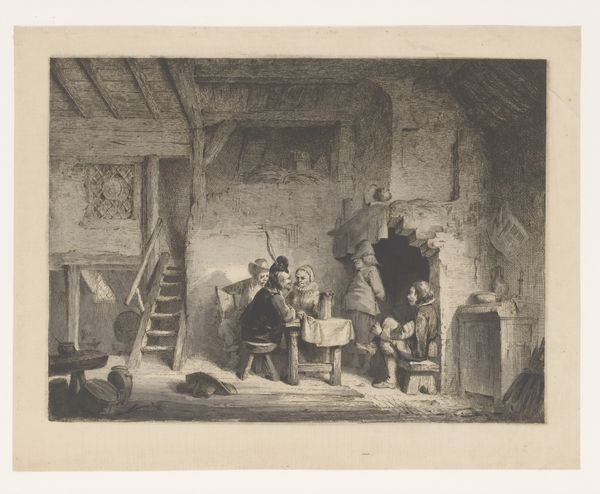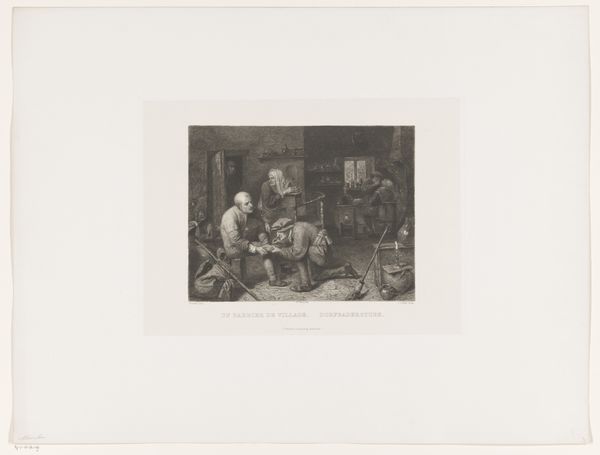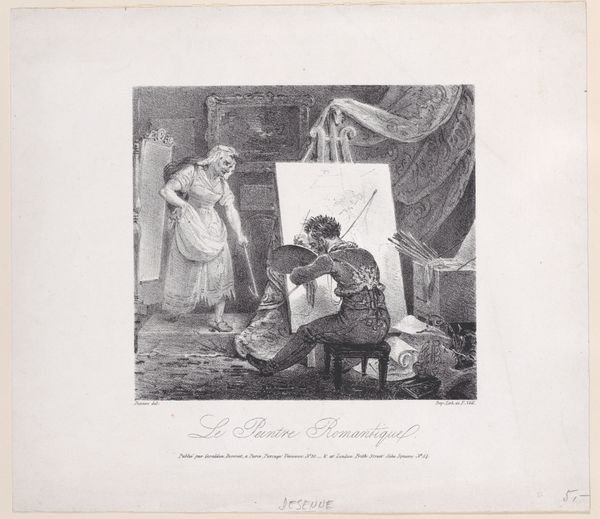
drawing, print, etching
#
portrait
#
drawing
#
dutch-golden-age
# print
#
etching
#
genre-painting
#
realism
Dimensions: height 270 mm, width 360 mm
Copyright: Rijks Museum: Open Domain
This print, *Painter in his Studio*, was made by Hendrik Wilhelmus Last, sometime in the mid-19th century. It's made from engraving, a printmaking process that involves incising a design onto a metal plate. The matrix is then inked and pressed onto paper. Looking closely, you can see the lines left by the engraver's tool, which give the image its texture. It’s a medium perfectly suited to describing scenes of work. Here, we see the artist at labor, observed by another painter, perhaps his teacher. You also get a sense of domestic industry, with the woman in the background holding a child-like figurine – perhaps a doll she has sewn. The artist and other figures are all bathed in a soft, even light. The engraver would have had to vary the depth and direction of the cuts to create this effect. And of course, the image also evokes the market for art itself, and the labor that goes into making it. Consider how this detailed print, with all its social and cultural information, was itself a product of skilled labor. Recognizing this can help us to understand how closely art is tied to the social and economic conditions of its time.
Comments
No comments
Be the first to comment and join the conversation on the ultimate creative platform.

